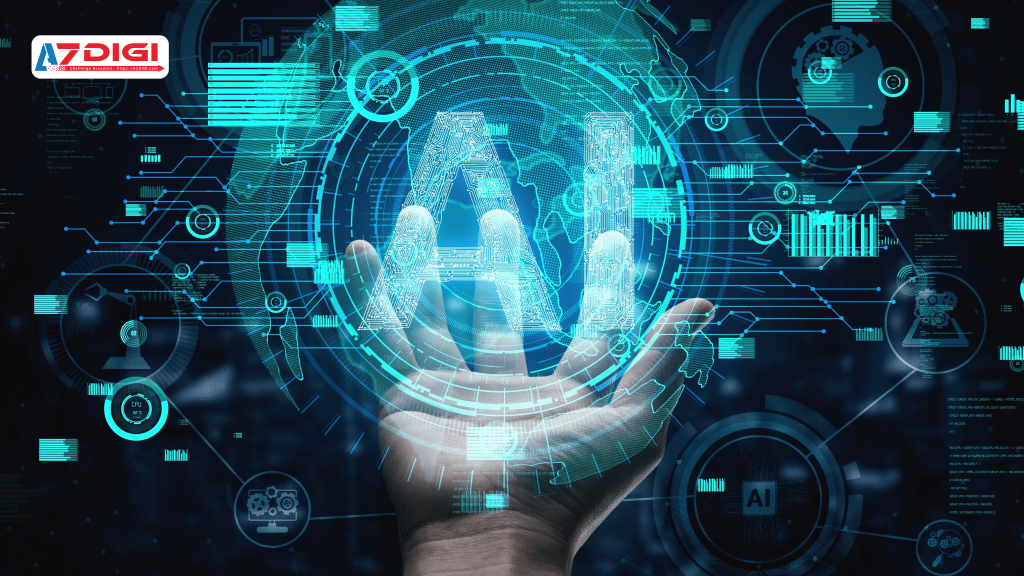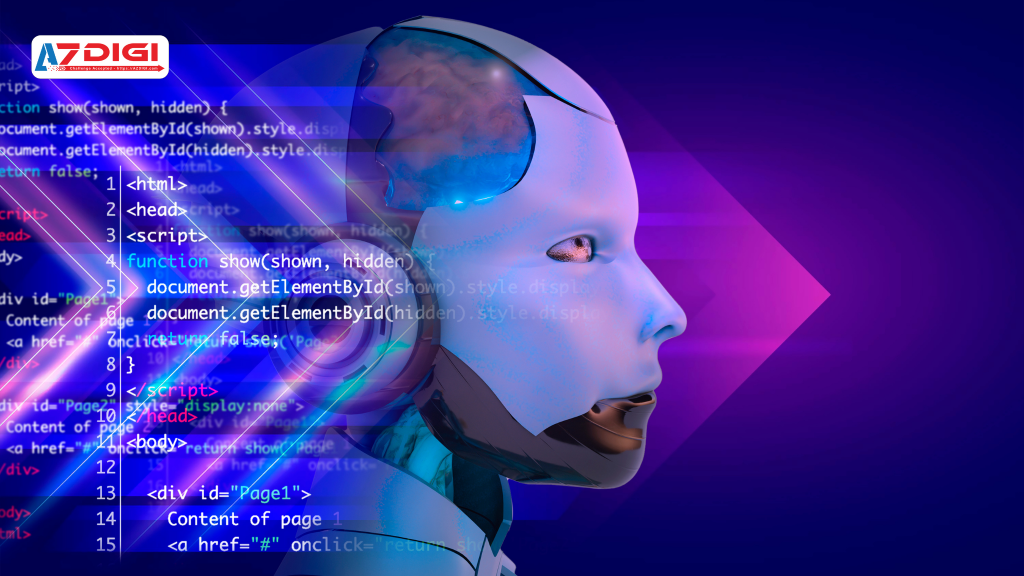Nội dung
Table of Contents
AI, or Artificial Intelligence, represents significant advancements in technology and modern science. Technology companies and electronic devices have been relentlessly focusing on developing AI in recent years. With its intelligence and computational power, AI has become an indispensable part of human life. However, many people still do not have a clear understanding of what Artificial Intelligence (AI) is and how many types of AI exist. Let’s explore detailed information in the following article provided by AZDIGI.

What is Artificial Intelligence (AI)?
Artificial Intelligence (AI) is a technology that enables machines to learn and simulate the thinking process of humans.
With Artificial Intelligence, we can program computers to perform intelligent behaviors like humans, helping save labor and ensure accuracy. The difference between Artificial Intelligence and previous programming is their ability to think independently.
Instead of just following logic operations set by humans, Artificial Intelligence (AI) can analyze situations and provide the optimal solution, helping save costs and increase work efficiency. Additionally, AI has the ability to compute and generate new ideas, assisting humans with more insights during the development process.
7 Types of Artificial Intelligence (AI)
Reactive Machines – Reactive AI Technology
These are the oldest and limited-capability artificial intelligence (AI) systems. They attempt to replicate the reactive ability of the human mind to different stimuli. However, these machines do not have the ability to store information and experiences for future use, meaning they are not capable of “learning.”
Instead, they can only automatically respond to certain inputs or limited combinations. They cannot use memory to improve operations based on what they have previously learned.
An example of a popular reactive AI system is IBM’s Deep Blue, a computer that defeated world chess champion Garry Kasparov in 1997.

Limited Memory
Current applications of artificial intelligence (AI) are built on limited memory technology, meaning they have the ability to learn from historical data to make decisions. To achieve this, AI systems use a large volume of training data stored in memory to create a reference model.
For example, in image recognition, AI is trained using thousands of images and labels to learn how to name objects in the images. When a new image is scanned by AI, it uses the training images as reference material to understand the content of the new image and relies on its learning experience to correctly label the image.
Popular applications of AI such as chatbots, virtual assistants, and self-driving cars are all powered by this limited memory technology .

Theory of Mind
Currently, researchers in artificial intelligence (AI) are striving to achieve a higher level of artificial intelligence, which is the level of mind. An AI at this level has the ability to have a better understanding of the people and objects it interacts with by recognizing their needs, emotions, beliefs, and thought processes.
Artificial emotional intelligence is a promising and emerging industry, but achieving a level of AI mind will require the synchronized development of many other fields within AI. This is because, in order to truly understand human needs, AI machines need to perceive humans as individuals with minds shaped by various factors, and to understand that, AI needs to have the ability to “understand” humans.

Self-aware
This is the final stage of artificial intelligence (AI) development, but currently, it only exists hypothetically. This type of AI would be self-aware, self-explanatory, and capable of developing to a level similar to the human brain.
Creating this type of AI is still far off and may take decades or even centuries to achieve, but it remains the ultimate goal of all AI research. This type of AI would not only have the ability to understand and stimulate emotions in the individuals it interacts with, but also possess its own emotions, needs, beliefs, and desires.

However, this type of artificial intelligence (AI) is also a threat to humanity. The development of self-awareness in this type of AI can contribute to our progress as an advanced civilization, but it can also lead to disasters.
The reason is that when this type of AI becomes self-aware, it can come up with self-preservation ideas and mark the end for humankind, directly or indirectly. Because this AI can surpass the intelligence of any human and devise complex plans to execute on humanity. Therefore, humans need to be vigilant against this type of AI.
Artificial intelligence (AI) plays a crucial role in modern life and has the potential to replace humans in many fields. This raises the need for the development of different types of artificial intelligence in the future to help improve human life AZDIGI hopes that the information about the various types of artificial intelligence provided in this article will help you understand better and gain a solid understanding of artificial intelligence (AI).
Read more about artificial intelligence (AI) here!

